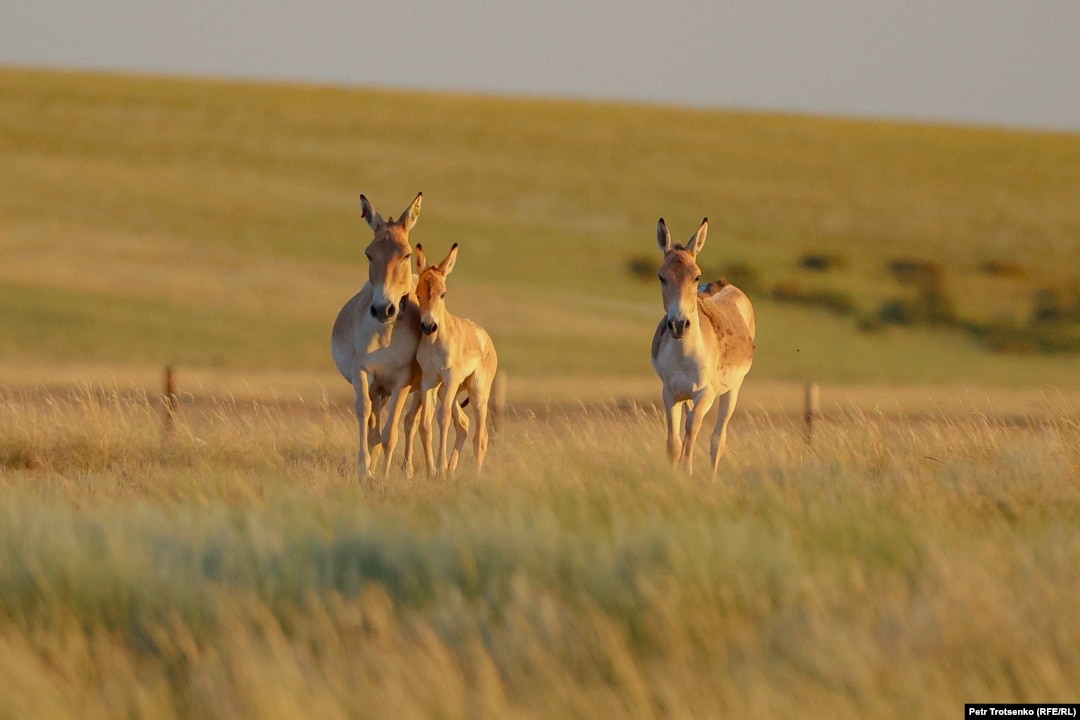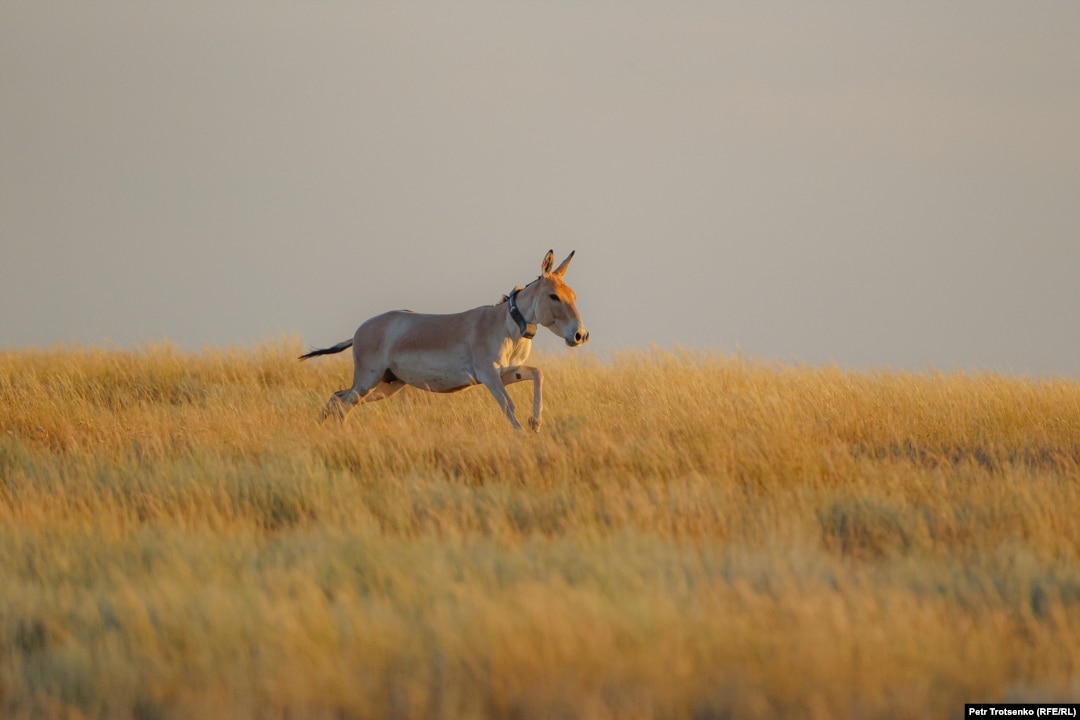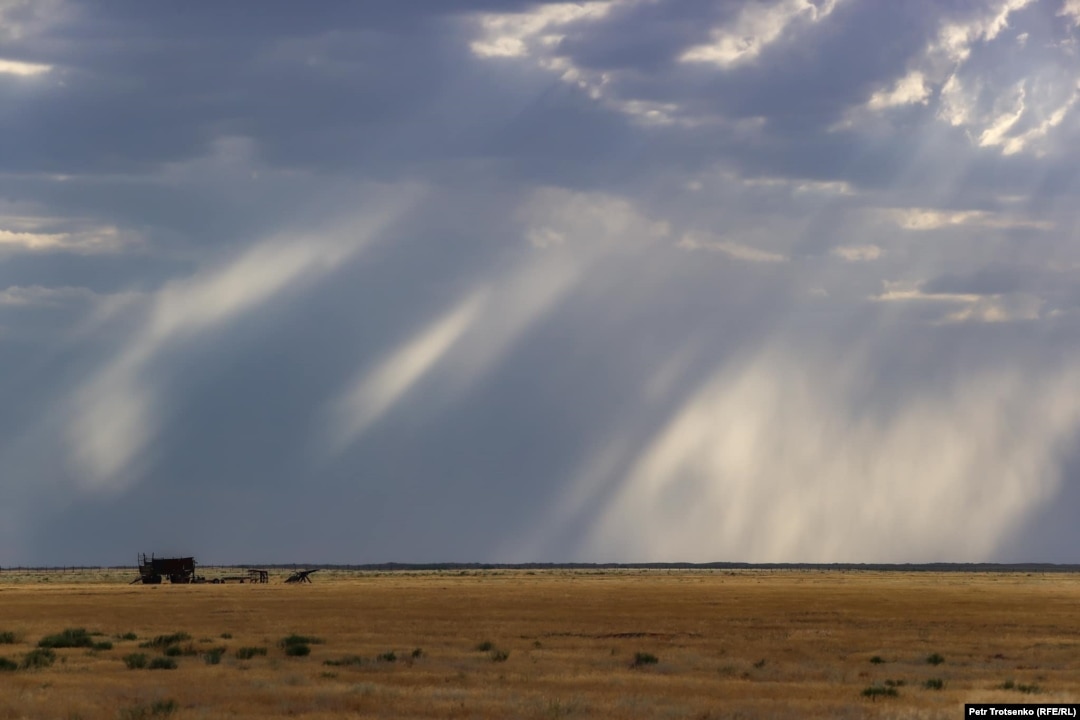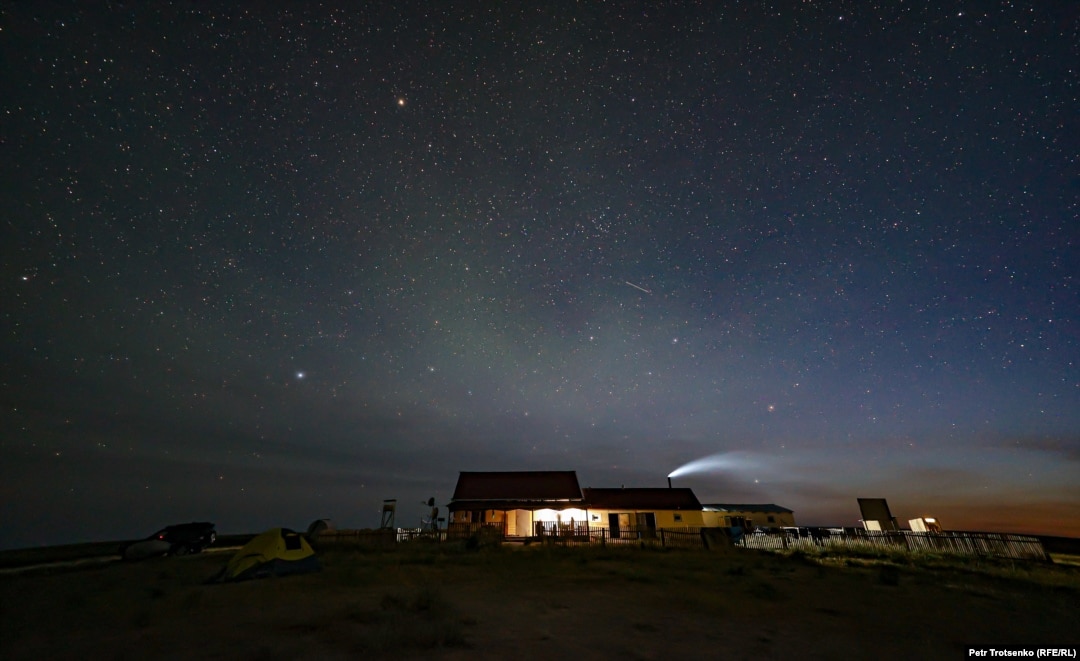The Return Of Kazakhstan's Endangered Kulans

This is a family of kulans, a species of animal native to Central Asia that look similar to donkeys but are as speedy and agile as horses.

Kulans are are highly endangered. A Kazakh subspecies of the animal disappeared entirely from Kazakhstan in the 1930s, largely due to hunting and other human activity.
The animals in these photos are a Turkmen subspecies of kulans that was first transported to the Altyn Dala conservation area in Kazakhstan’s northern Kostanay region in 2017.

The Altyn Dala reserve is funded by the Kazakh state and German, British, and Norwegian conservation groups with the aim of repopulating northern Kazakhstan with roaming herds of kulans. For now, five of the animals are kept inside a 40-hectare corral ringed with a chain-link fence.

The conservation center, home to scientists working on the Altyn Dala reserve, is more than 70 kilometers from the nearest human settlement. Rangers here live without cell-phone coverage and have access to a shaky Internet connection just once a day to check messages and send research data.
Albert Salemgareev (seen here helping schoolchildren view kulans on June 19) is a Kazakh conservation specialist who works on the Altyn Dala reserve.
The ranger told RFE/RL that the corral in which the kulans live “is arranged to create the most natural living conditions” and includes a natural pond and depressions in the ground that he says are vital for kulans, who like to “hide in secluded places, out of sight of our rangers."
A male kulan occasionally jumps the fence of the corral and wanders alone on the steppe.
Salemgareev says kulans use strength in numbers to guard against predators. "What we have seen is that when a wolf comes close to the corral, kulans bunch together and stare the predator down. The risk for the predator is too high when there's one wolf facing four kulans," the scientist says.
The fence of the Altyn Dala reserve.
Transporting the freedom-loving animals to the site is fraught with difficulty. Salemgareev admits that one kulan died of panic while being driven to Altyn Dala from southern Kazakhstan. "When we drove along straight roads he was calm, but when we got onto bumpy roads he began to throw himself against the walls of the trailer, literally beating himself bloody."
Since 2017, nine kulans have been released into the wild. Two were killed by poachers, who were careful to leave the animals' tracking collars behind, one died of natural causes, and two returned to the corral. The fate of the remaining animals remains unknown.
The aim of the program is to eventually to have enough kulan raised at the corral and released into the wild that the animals can be removed from Kazakhstan's list of endangered species -- a goal that is likely to take decades of work.

